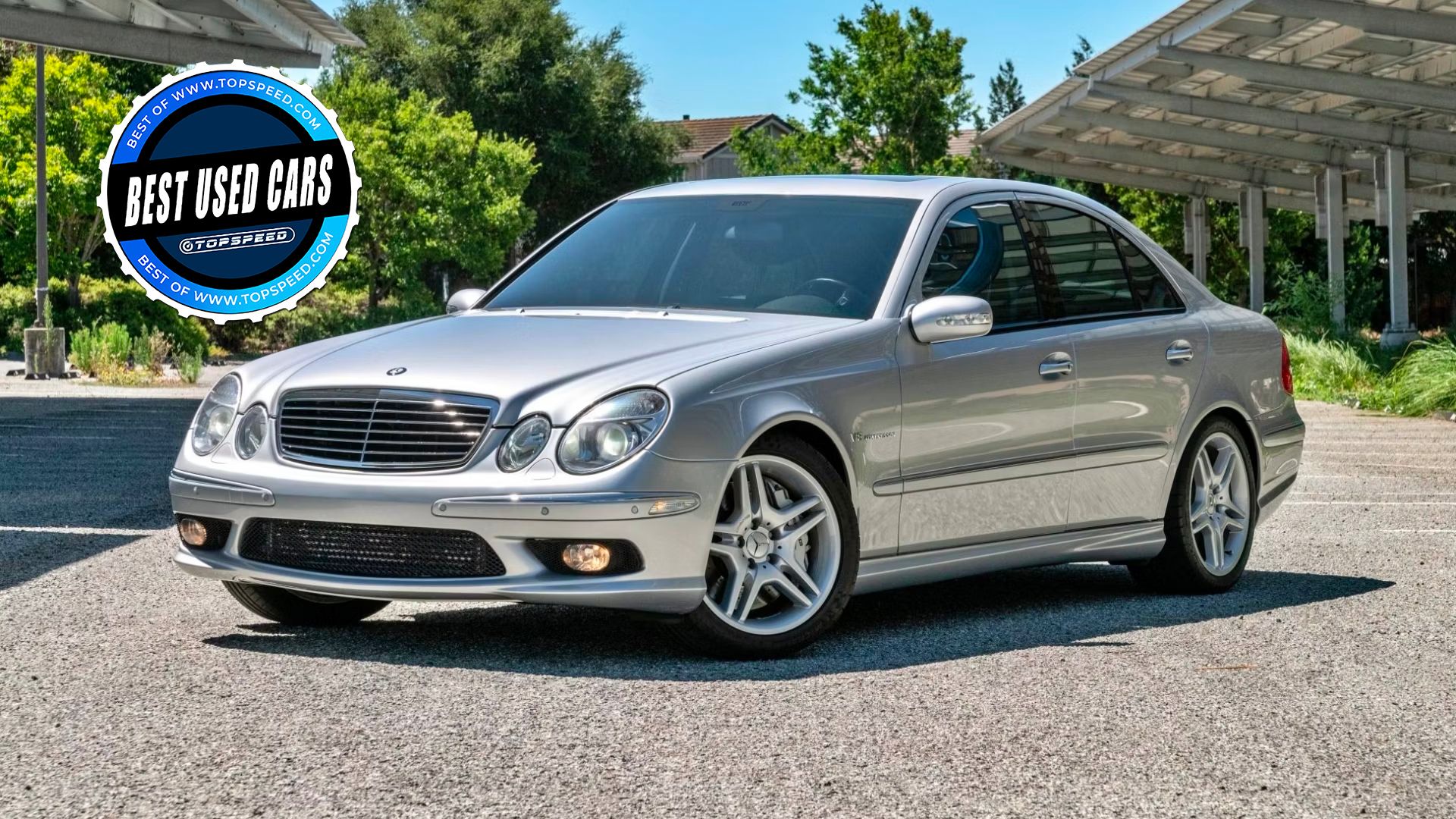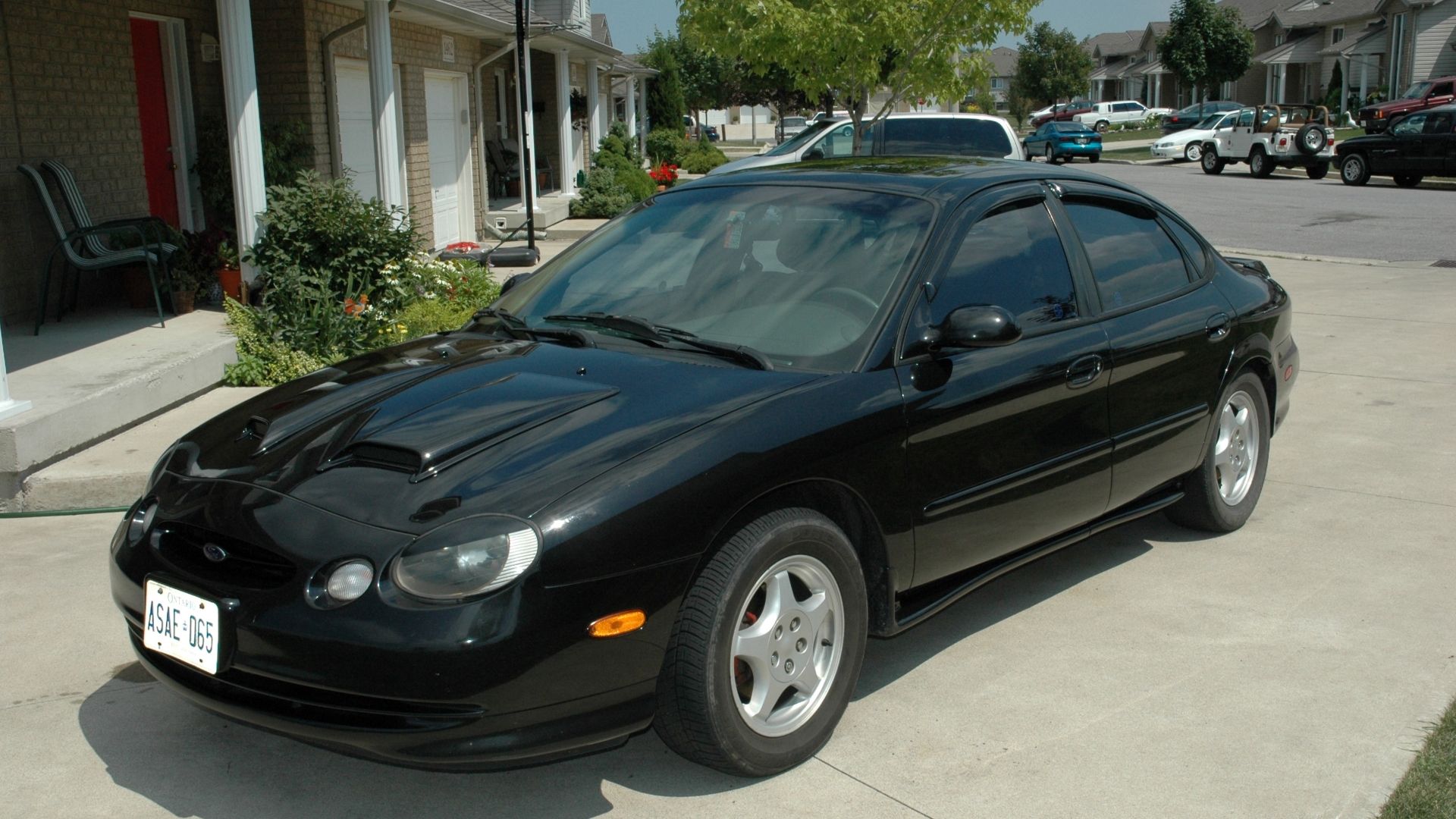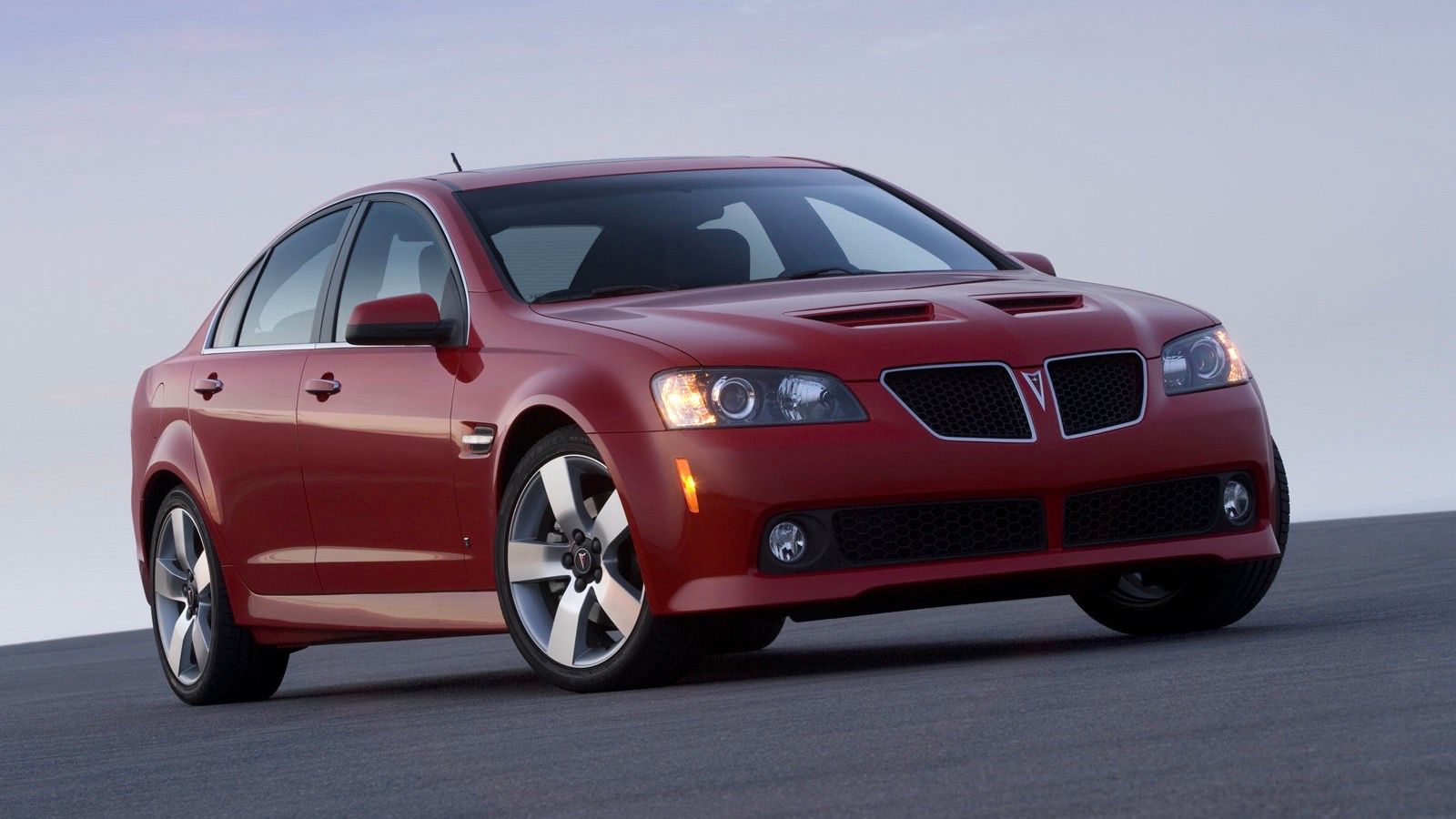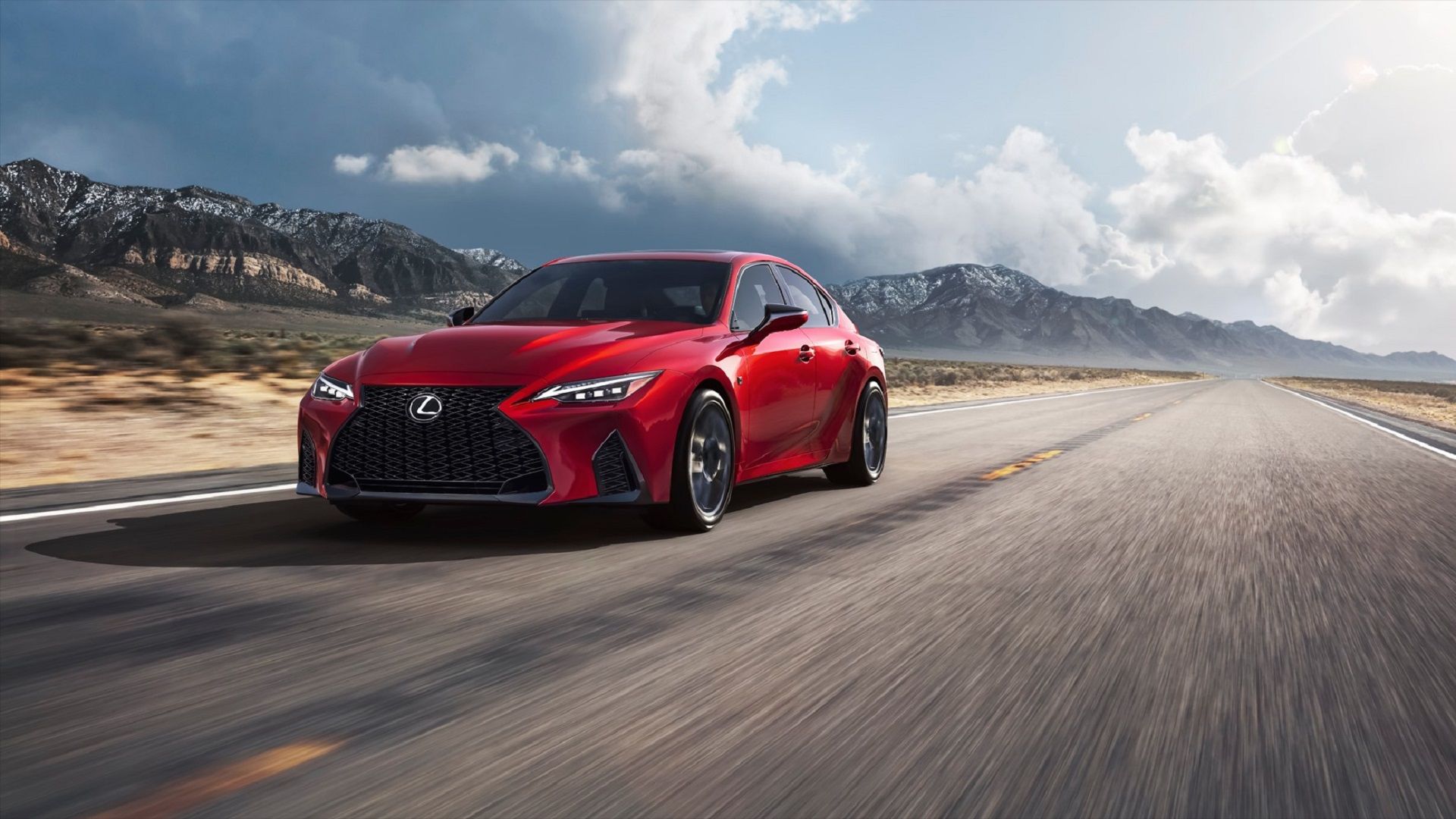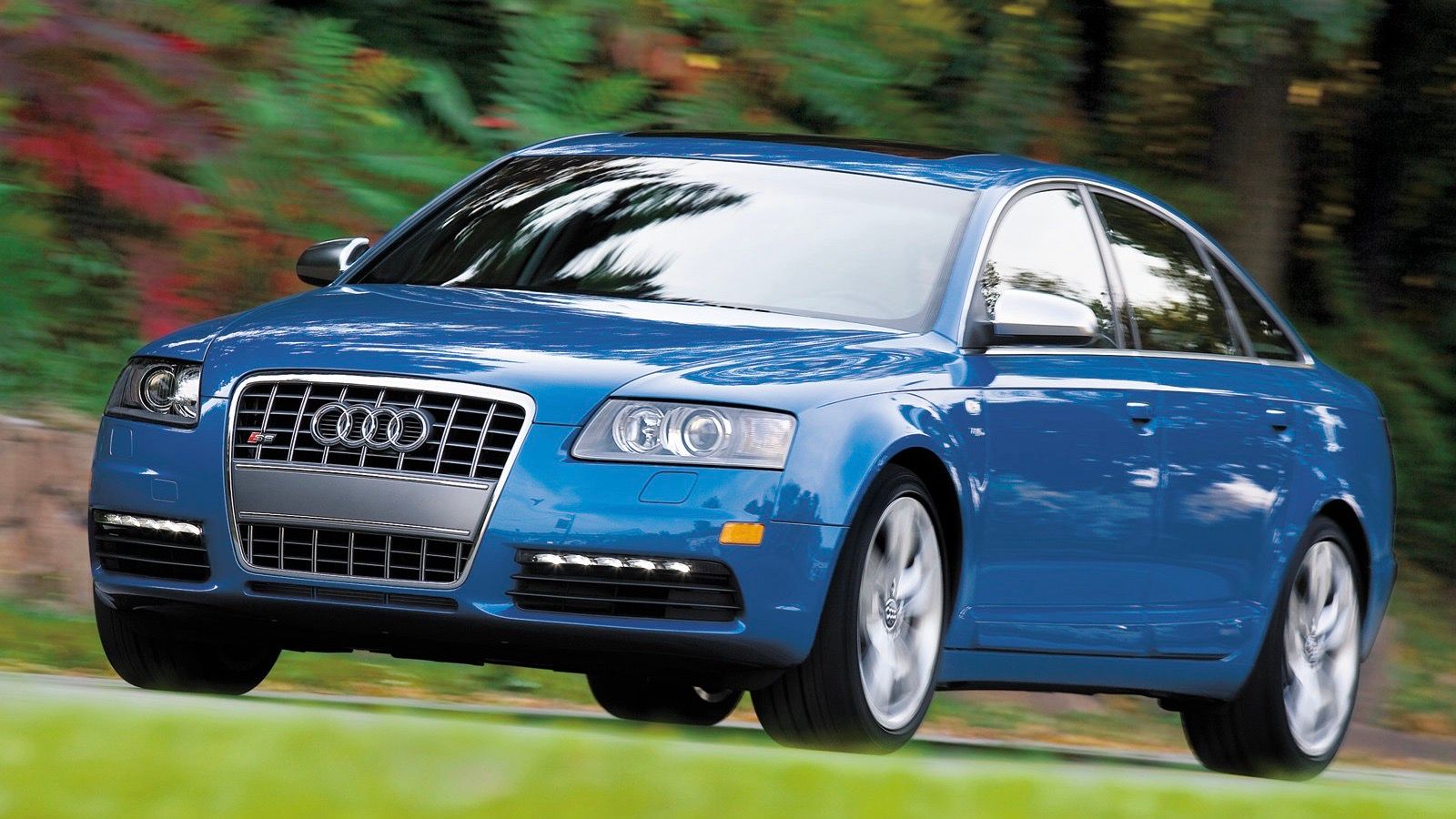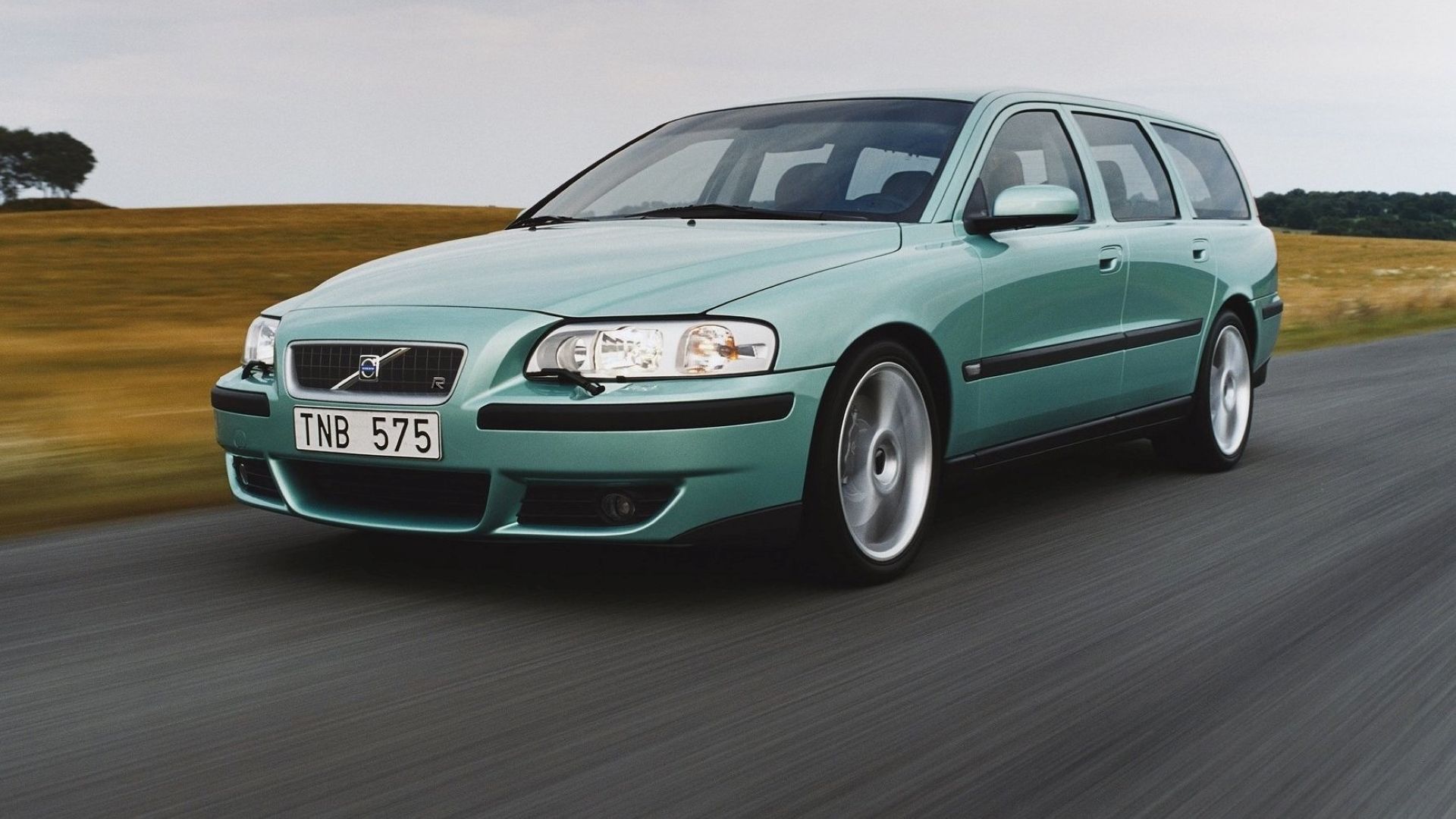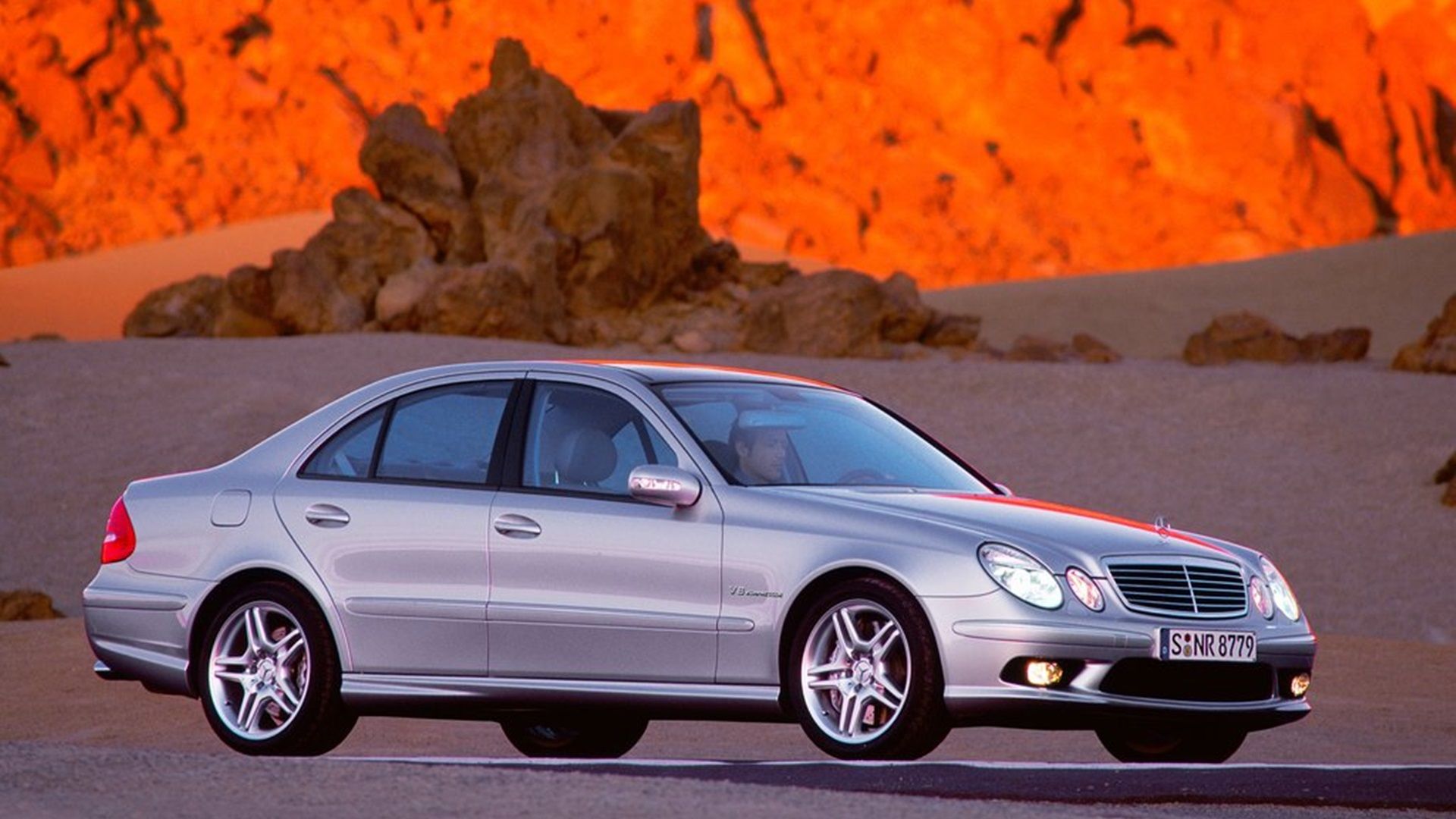Summary
- Sleepers are sporty cars with unassuming exteriors that pack a serious punch underneath, making them a favorite among automotive enthusiasts.
- Engineers often create sleepers as special projects, tuning vehicles to achieve incredible speeds while flying under the radar.
- Sleepers can come in different forms, from classic muscle cars with beefed-up engines to modern-day sedans with hidden power, reminding us not to take things too seriously.
Sleepers, as a concept, are a sinister yet entertaining way to view sports cars. These types of sporty, unassuming cars give the appearance of regular traffic with restrained exterior designs, but pack a serious punch underneath. Whether it be a powerful engine, sophisticated suspension, or a combination of performance upgrades, sleepers will always have a place in many automotive enthusiasts' hearts. It just takes a dive into the go-pedal to find out what some of the world's best sleepers can really achieve. Sleepers are a reminder not to take things too seriously.
Often, a love letter from the engineers stems from deep within the companies who spend their time behind the scenes making things go faster and work better just because they can. It's the type of nerdy yet respectable special project cars that often become the quirky sleepers of the world. Whether it's a modern-day sleeper or one of the originals, the idea of subtlety tuning a vehicle to achieve incredible speeds or other performance perks while flying under the radar has not been a lost art.
Back in the days of the classic muscle cars, the best way to build a sleeper was to take an average car and beef up the engine to the point of making it dangerous for the driver and the car. Thankfully, car makers along the way have made things easier for you all by producing some vehicles that were already made to be a car with a little more power than anyone would ever expect. There will always be a place for the classic sleeper, and here are ten of the best of all time.
Using the most up-to-date data found on the carmaker's websites, media press releases, and interviews by other reputable sites, we have compiled a list of the best three-row mid-sized SUV options available.
Updated on August 26, 2023: Over the decades, numerous performance cars have come and gone that have gained a place in our hearts, so we have decided to refresh and update this list. That means instead of burying this one into the endless articles lost to the internet, the original ten sleeper cars can be found below, with some new information and more data added.
10 1996 Ford Taurus SHO
Top Speed: 136 MPH
Get ready for the show, or SHO, rather. The third generation Ford Taurus SHO was something of a Frankenstein, and it's wonderfully awful, yet glorious at the same time. Known as the "bubble Taurus" because of its highly organic "bubbly" and oblong styling, it was the epitome of questionable 90s design. Looking back, however, there is a sort of nostalgia for the car as it seems like a breath of fresh (but odd) air in today's monotonous, repetitive design culture.
Performance
| Engine Size | 3.4-liter V-8 |
| 0 to 60 MPH | 8 seconds |
| Top Speed | 136 MPH |
| Curb Weight | 3,574 pounds |
| Horsepower | 235 horsepower |
| Torque | 230 pound-feet |
| Layout | front engine, front-wheel drive |
This would be the third iteration of the SHO high-performance model of the Taurus, and Ford made sure to make it memorable under its plump skin. This time around, the SHO would sport a V-8. Not just any V-8, but one with heads designed by engineering experts at Yamaha, and the block from other engineering experts at Cosworth, a company Ford has worked with in the past on other racy models. The SHO did not have the best acceleration or top speed, but who in their right mind would ever expect a Taurus to ever have enough power to even consider racing off the line? This front-wheel-drive, V-8, oblong wonder was the epitome of a sleeper.
9 2008 Pontiac G8 GT
Top Speed: 140 MPH
Pontiac may be a thing of the past, but the G8, one of their last cars to be produced, was a real winner. A sharp-looking sedan on the outside and relatively minimal on the inside, the G8 was undoubtedly a handsome thing. The base model was fairly ordinary with a V-6 powertrain. However, upgrade to the GT model and gone is the V-6 in favor of a Corvette-derived 6.0 liter V-8 that put out 361 horsepower and 385 pound-feet of torque. It was difficult to tell a GT model from a base model, as the styling cues didn't change much from model to model.
Performance
| Engine Size | 6.0-liter V-8 |
| 0 to 60 MPH | 4.7 seconds |
| Top Speed | 140 MPH |
| Curb Weight | 3,918 pounds |
| Horsepower | 361 horsepower |
| Torque | 385 pound-feet |
| Layout | front engine, rear-wheel drive |
Upgraded wheels and quad exhaust tips differentiated the two, but from afar, it was near impossible to tell if you were about to challenge a Corvette-powered G8 or not. Later, Pontiac offered a slightly less sleepy GXP model with racier bumpers and flashy wheels. In that model, you got a punched-out 6.2 liter V-8, now producing 415 horsepower. You also got access to a manual transmission. This thing was basically a hot rod in fancy cop-car clothing.
8 2012 Buick Regal GS
Top Speed: 142 MPH
The Regal GS was undeniably beautiful. The base model looks were only OK, but the GS model brought a luxurious feel to the car. Large wheels, a reworked bumper, and body panels took the humble Regal and seemed to bring it up a class or two. It didn't look particularly fast, but elevated elegance was more its thing.
Performance
| Engine Size | 2.0-liter four-cylinder |
| 0 to 60 MPH | 6.2 seconds |
| Top Speed | 142 MPH |
| Curb Weight | 3,821 pounds |
| Horsepower | 270 horsepower |
| Torque | 295 pound-feet |
| Layout | front engine, front-wheel drive |
The Regal GS was by no means a rocket ship, but it did offer a spicier 2.0-liter turbocharged engine that made 270 horsepower and nearly 300 pounds-feet of torque. For the time, these were very healthy numbers for a two-liter engine, even if it was a bit of a heavyweight. If you wanted a little more power, you could also opt for the more powerful 3.8-liter V-6 that came in some of the later model GS, but the little 2.0-liter may surprise you once you give it a spin around the track (or the block.)
7 1984 Mercedes-Benz 190E 2.3-16
Top Speed: 144 MPH
One of the most sought-after sleepers in existence is the illustrious Mercedes-Benz 190E. In the 2.3-16 guise, the 190E was the sleeper nobody asked for, but Mercedes needed to go racing. A homologation road car resulted, and it's so perfectly a sleepy race car derived sport sedan. The styling is so subtly different to the average eye that this car is exemplary of the times when badging (as it pertained to engine size) was relevant.
Performance
| Engine Size | 2.3-liter inline four-cylinder |
| 0 to 60 MPH | 8 seconds |
| Top Speed | 144 MPH |
| Curb Weight | 2,976 pounds |
| Horsepower | 182 horsepower |
| Torque | 173 pound-feet |
| Layout | front engine, rear-wheel drive |
The 2.3 liter, 16 valve engine was a regulation-abiding capacity for four-cylinder DTM racing edges of the time. The Mercedes was not created to take on the straight-line quarter-mile muscle cars as the slow 0 to 60 MPH shows, but the engineered suspension makes for a car that hugs the road at high speeds. And as you well know, a four-cylinder engine can accelerate fast through the corners without fishtailing, making the exit even quicker on the track. The 190E has always stood as an early performance icon for Mercedes-Benz, and for sleeper enthusiasts, it should be regarded as one of the best examples of the recipe.
6 2023 Lexus IS500
Top Speed: 149 MPH
Every time a Lexus IS drives by, pinning it as a 350 or 500 is incredibly difficult. The styling changes are so minuscule that you'd have to either see the quad tailpipes, or hear the sound coming from them in the form of glorious 5.0 liter V-8 rumbles to tell it's an IS500. Thankfully, the team at Lexus hasn't over-badged it too. Its full name, Lexus IS500 F-Sport performance, might be silly and a sellout of calling it a full ISF, but its only badges say IS500, and from far away, reading IS350 vs. IS500 is difficult.
Performance
| Engine Size | 5.0-liter V-8 |
| 0 to 60 MPH | 4.4 seconds |
| Top Speed | 149 MPH |
| Curb Weight | 3,969 pounds |
| Horsepower | 472 horsepower |
| Torque | 395 pound-feet |
| Layout | front engine, rear-wheel drive |
This car is a true sleeper. It's not even that loud at idle, but one crack of the throttle and 470+ horsepower is unleashed seemingly out of nowhere. It is highly suggested that you get to know this car before you try to go out and race it because the power and torque will surprise you. Those who are not ready for it may just end up in a ditch somewhere, or worse yet, become the laughing point of a video that someone was able to post of your debacle. Of course, if you prefer, the Lexus IS500 can just be a simple daily driver with a kick; that is up to you and your specific desires.
5 2008 Audi S6
Top Speed: 155 MPH
How about a Lamborghini in Audi's clothing? That's precisely what you'll get with a 2008 Audi S6. This very understated mid-sized sedan hides a 5.2 liter V-10 sourced directly from Lamborghini's (new at the time) Gallardo supercar. Here, the engine made a respectable 435 horsepower, more than enough to propel the S6 to sixty miles per hour in under five seconds, which was plenty quick for a non-RS badged Audi from the mid-2000s.
Performance
| Engine Size | 5.2-liter V-10 |
| 0 to 60 MPH | 4.8 seconds |
| Top Speed | 155 MPH |
| Curb Weight | 4,539 pounds |
| Horsepower | 429 horsepower |
| Torque | 398 pound-feet |
| Layout | front engine, all-wheel drive |
During this time, it wasn't uncommon to see high-cylinder count engines in sporty cars, but this was only the S model and was styled as such. Later tuners famously uncorked the S6's exhaust system, and videos of Lamborghini-sounding Audi sedans filled the internet in a hilarious attempt at un-sleeping the ultimate Audi sleeper. No matter how you exhaust it, though, the Audi S6 is a V-10 sleeper that will not only surprise the Chevrolet Camaro that pulls up next to you at the light, but you as well when the force of the launch sets you back in the seat.
4 2001 Volkswagen Passat W8
Top Speed: 155 MPH
A bit of an oddball, the 2001 Volkswagen Passat might be one of the sleepiest of sleepers. Volkswagen isn't well known for its eight-cylinder engines, but that's exactly what you got if you opted for the engine upgrade in your early 2000s Volkswagen Passat wagon. Available on this particular vehicle were options of either a sedan or wagon configuration, a manual transmission, "4-Motion" all-wheel-drive, and, of course, the famed W-8 engine that essentially combined two VR4s at a standard crank to create the W-8.
Performance
| Engine Size | 4.0-liter W-8 |
| 0 to 60 MPH | 6.4 seconds |
| Top Speed | 155 MPH |
| Curb Weight | 3,814 pounds |
| Horsepower | 271 horsepower |
| Torque | 273 pound-feet |
| Layout | front engine, all-wheel drive |
This gave Volkswagen the flexibility to offer V-8 power in a more compact package. This was the only way to get this eight-cylinder power into a car designed to take a four-cylinder, with an occasional six-cylinder forced into place. The Passat was the only car to ever use the 271 horsepower W-8 engine as Volkswagen discontinued it before switching to a more traditional V-8 engine because of sales. The W-8 design did not allow enough power and torque to be engineered into it, so even though it is still a good sleeper today, the Volkswagen Passat W-8 is simply not enough for hard-core, power-hungry car enthusiasts.
3 2003 Volvo V70 R
Top Speed: 155 MPH
Although not the original go-fast Volvo wagon, the V70 R was the less obvious sleeper. It was also the one that arguably brought back the idea that fast Volvos could be taken seriously. Since the V70 R, beefed-up Volvo vehicles have been around in some form or another. R and R-design models have injected a sportiness into Volvo that hadn't been seen in the decades before. After the R's came polestar, which also brings subtle speed to the equation.
Performance
| Engine Size | 2.5-liter inline five cylinder |
| 0 to 60 MPH | 6.5 seconds |
| Top Speed | 155 MPH |
| Curb Weight | 3,929 pounds |
| Horsepower | 295 horsepower |
| Torque | 295 pound-feet |
| Layout | front engine, all-wheel drive |
The Volvo V70 R might be one of the most subtle performance offerings from any brand ever, with the slightest hints at its performance edge. An average-looking set of five-spoke wheels and an extremely minimal rework of the bumpers are all that set it apart. It appears nearly as pedestrian as any other wagon on the road, and because of that, it makes an exceptional sleeper with nearly 300 horsepower from its aural inline-5 engine.
2 2004 Mercedes-Benz E55 AMG (W211)
Top Speed: 155 MPH
The W210 E55 AMG was always going to be a tough act to follow, but come the early 2000s and Mercedes really did outdo themselves. Credited as the super sedan that started the German horsepower wars that still wages on to this day, the W211 E55 AMG was a revelation. In fact, Doug DeMuro called it one of the greatest German performance sedans of all time. Built between 2003-2006, the W211 E55 packed a hand-built 5.5-liter Supercharged V-8, straight out of the SL of its day.
Performance
| Engine Size | 5.5-liter V-8 |
| 0 to 60 MPH | 4.2 seconds |
| Top Speed | 155 MPH |
| Curb Weight | 4,306 pounds |
| Horsepower | 469 horsepower |
| Torque | 516 pound-feet |
| Layout | front engine, rear-wheel drive |
While the 469 horsepower may not sound much by modern standards, the 516 pound-feet of torque and the soundtrack will impress even the most hard-core critic. Power was routed exclusively to the rear wheels via a five-speed automatic gearbox. This humble-looking Mercedes could accelerate to 60 mph in just over four seconds and has a top speed of 155 MPH simply because of a limiter. Take the limiter off and you're looking at 180 MPH or more, making it the fastest production sedan of its day.
1 2004 Cadillac CTS V
Top Speed: 165 MPH
A car no one expected from a brand with a shaky future. The original Cadillac CTS V launched the V performance division and might have helped bring some much-needed youth-filled enthusiasm back to the brand known for catering to a more "seasoned" generation. Since then, multiple generations of the CTS V have been produced, a smaller ATS, both of which have been replaced by the CT4 and CT5 V, and now Blackwing models. Today, even an Escalade V exists if you're into that sort of thing. It's been a bit of an alphabetical roller coaster, but the essence is still the same: take GM's best powertrains and build upon them while providing solid chassis tuning.
Performance
| Engine Size | 5.7-liter V-8 |
| 0 to 60 MPH | 4.8 seconds |
| Top Speed | 165 MPH |
| Curb Weight | 3,907 pounds |
| Horsepower | 400 horsepower |
| Torque | 390 pound-feet |
| Layout | front engine, rear-wheel drive |
The cars aren't particularly light, but they are always fast, and later V models tend to outhandle the competition. V cars have traditionally been more restrained in the looks department, and the very first V, the 2004 CTS V is the prime example. A set of chrome wheels, big brakes, and a shiny mesh grille are all that visually set the V apart from the standard CTS. You'd never know a 400 horsepower 5.7 liter Corvette engine lurks beneath.

